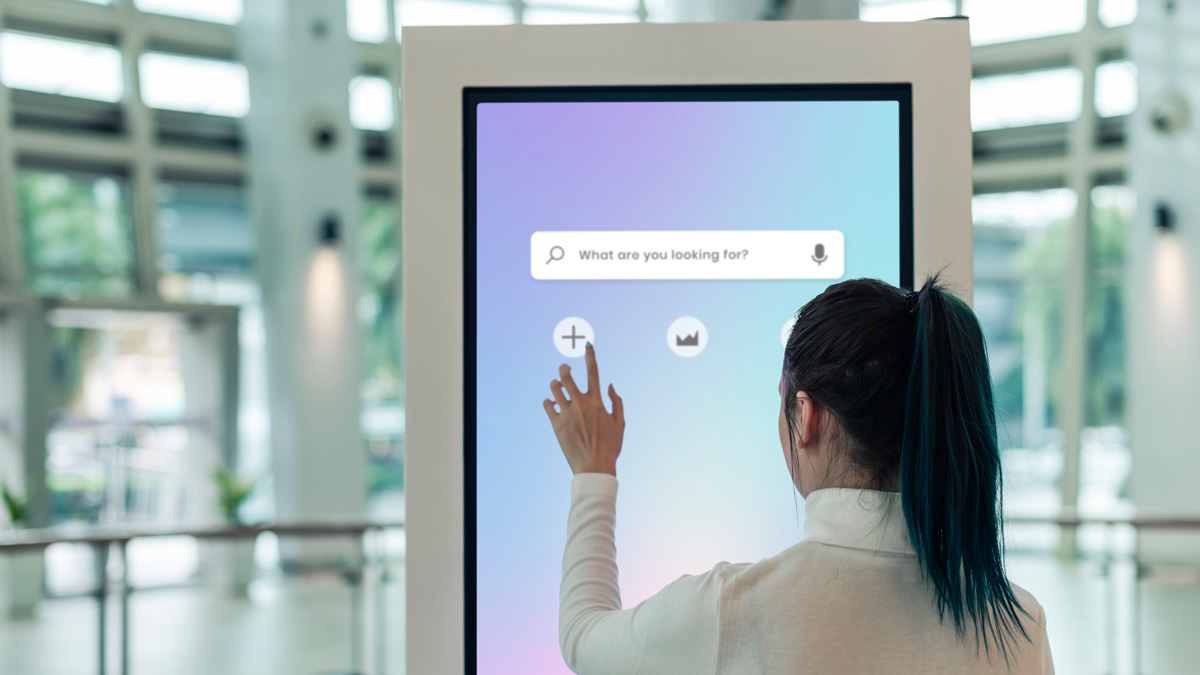
- What Exactly is Interactive Advertising?
- What are its Different Types?
- How Do These Ads Boost Engagement?
- Reviewing the Benefits of This Type of Advertising
- What are Predictable Challenges in Implementing Interactive Advertising Properly?
- How to Create a High-Quality Interactive Ad?
- 3 Well-Crafted Interactive Ads
As consumers’ habits change, new ads emerge to meet their evolving preferences and interests. Interactive advertising is a fresh approach businesses find useful for capturing their target audience’s attention.
In this blog, we will closely examine this type of ad to determine its effectiveness.
Let’s begin by defining the term and getting familiar with this method.
What Exactly is Interactive Advertising?
Nowadays, engagement is considered a primary metric. Put simply, the more engagement a brand gains from its target audiences, the more effective its marketing efforts are.
As a result, a wave of interactive approaches has surfaced, each contributing to the evolution of marketing strategies. One such approach is interactive advertising. Let’s explore this concept for a clearer understanding.
Interactive ads represent a novel approach to promotion. In this approach, the ad responds to users’ input. This interactivity provides a more dynamic and engaging experience for the target audience and can potentially revolutionize the advertising landscape.
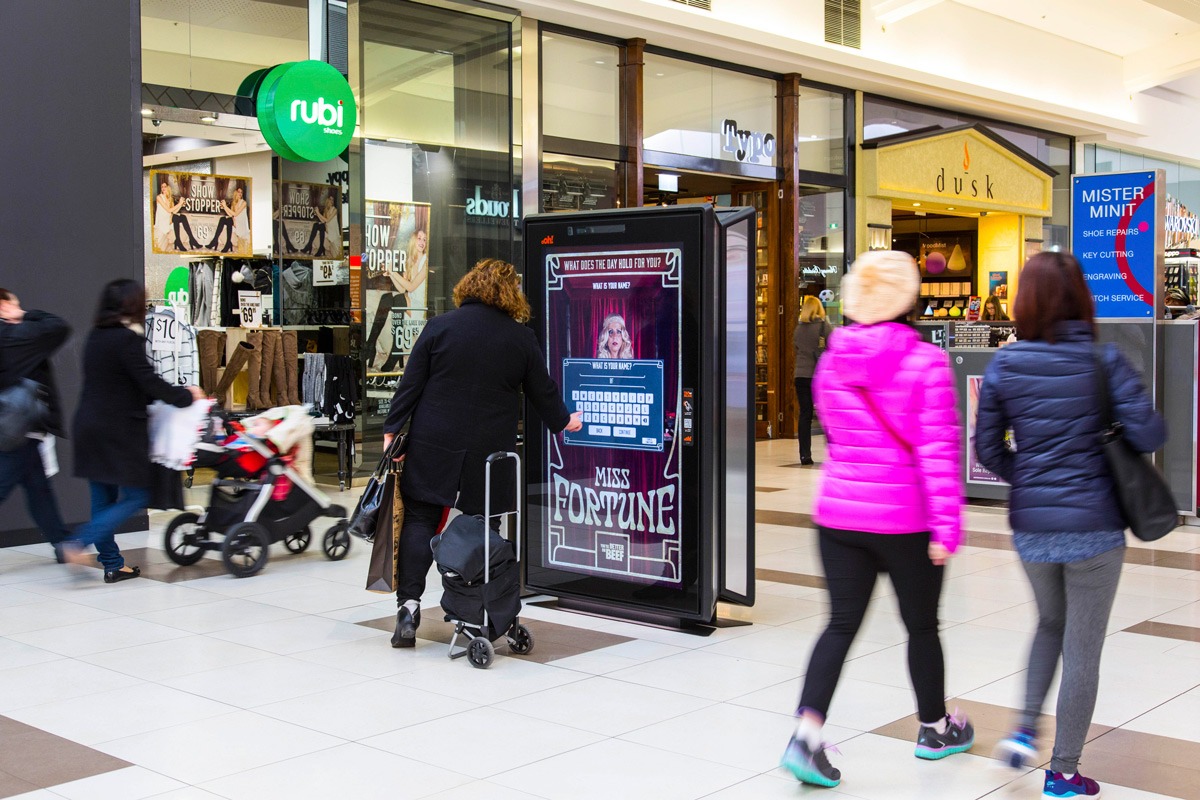
As you know, in older traditional methods, users are mere consumers or passive viewers. Interactive advertising, conversely, encourages them to participate actively by taking specific actions, like tapping, swapping, etc.
Interestingly, their interaction will influence the ad’s content and outcomes.
Interactivity has several similarities with dynamicity, but there are some minor differences you should be aware of. The latter is a newer approach in which the audience has a more impactful role. Additionally, implementing interactive ads requires more modern techniques and tools.
Brands that take this approach can capture their target audience’s attention more efficiently and benefit from several other advantages, which we will discuss later in this blog.
Once again, interactive advertising is a relatively fresh method for promoting a brand’s goods and services. It aims to attract more attention by actively engaging viewers. Hence, it is more engaging, more memorable, and provides more data for brands that opt for it.
This approach helps brands create memorable experiences, leading to future benefits.
There are various types of this way of advertising, and we will examine them here.
What are its Different Types?
There are several methods to gain interaction for your advertising campaign. Your brand can create innovative interactive advertising with a wide range of choices available.
Let’s get familiar with them.
Interactive banners
Internet advertising banners, those familiar rectangular displays, can do more than promote a brand, website, product, or service.
They can become interactive ads, inviting users to engage in a whole new way.

An infrastructure should be in place to display engaging content whenever someone clicks on the ad. For instance, your brand can run a simple and amusing survey immediately after a user clicks the banner.
360-Degree Tours
This content creates an immersive experience for ad viewers, placing the consumer at the center and respecting their desire to explore different angles and aspects of the product or service.
For example, a real estate agency can effectively use this type of interactive advertising to showcase a villa or penthouse.
Since consumers favor this approach, we strongly suggest considering it if it aligns with your branding and marketing strategy.

It’s important to Consider the Context and Stage of Advertising. Virtual Tours aren’t a good type for top-of-funnel advertising, but if the user is in the decision-making stages, 360-degree advertising content will be helpful.
Gamified Playable Ads
This is one of the most common ways of creating an interactive ad. Mobile games and applications mainly use this method to grab viewers’ attention and create demand.
It provides a small portion of the game and, if appealing enough, can encourage consumers to download the full app or game from app stores. These ads usually have a time limit, after which a CTA appears, prompting the audience to take a specific action.
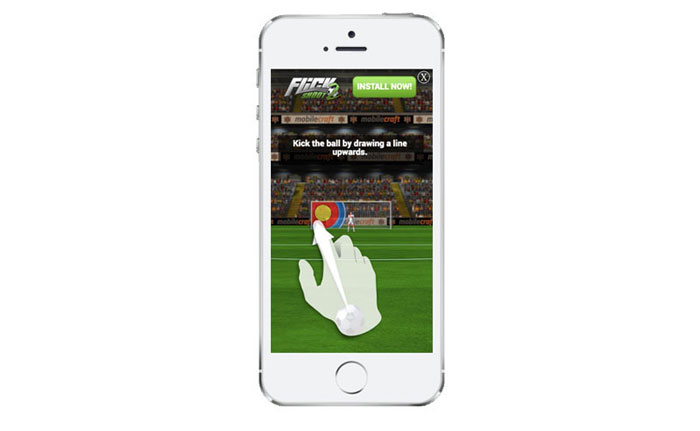
It is proven that playable ads can increase engagement and conversion rates significantly.
Augmented Reality (AR) ads
AR ads use specific applications on smart devices, such as phones and tablets, to add visual elements to the actual environment that are not visible to the naked eye.
Brands have found innovative ways to leverage this technology to create interactive advertisements.
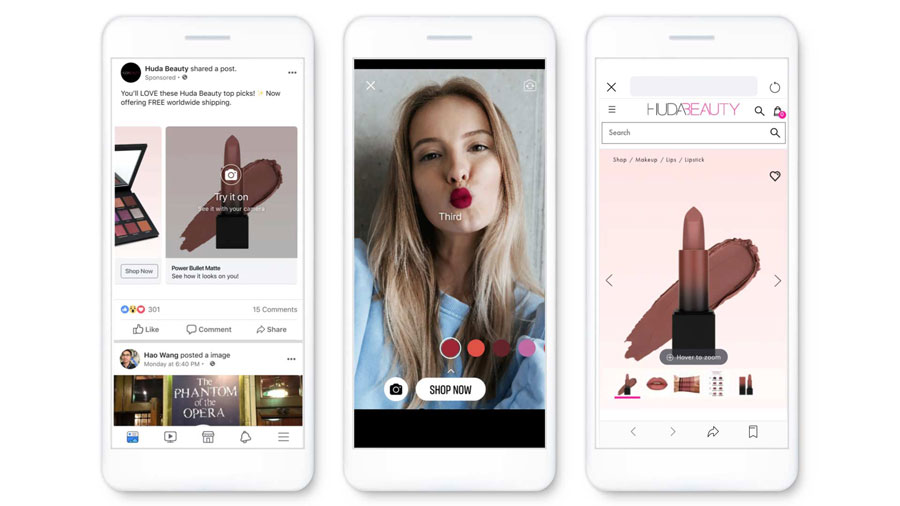
Take home decoration businesses as an example. They can use AR to create attractive ads where their target audience can try what new furniture will look like in their living room!
Facebook Spark service is one of the advanced interactive advertising platforms. You can develop an AR filter and use it as an advertising asset.
Interactive Video Ads
It is no secret that videos have become the preferred form of content in recent years, and their effectiveness in advertising goods and services has been well-documented.
Therefore, you can leverage videos in interactive advertising campaigns to efficiently capture the target audience’s attention and motivate them to take the specific action you desire.
Choosing this type allows you to express creativity and create unique content.
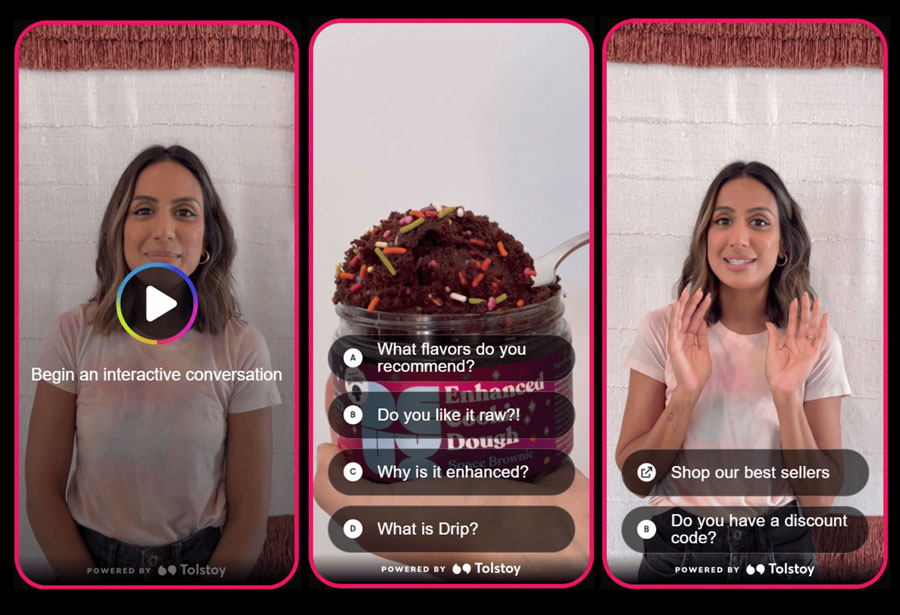
Interactive video ads can help you achieve goals such as showcasing product details, demonstrating a service in action, or providing comprehensive guidance that will take the viewer to the product pages.
As mentioned above, the primary benefit of interactive advertising is that it can increase engagement. But how does it achieve this? You will find the answer in the next section.
Interactive Display and screens
Interactive advertising isn’t limited to the digital environment; many hybrid forms of advertising are available now. For example, Interactive Displays are commonly implemented in exhibitions and events.
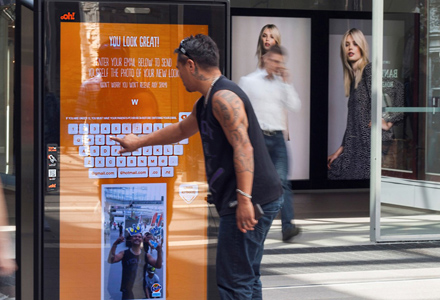
Interactive displays could utilized for advertising content. Top brands use Interactive Displays to help people navigate, get place information, order something, or play a game. Advertising is not the main content but it can be a lateral subject.
For a related read, check out: Interactive Display Ideas And Use Cases
How Do These Ads Boost Engagement?
Interactive advertising is a powerful tool that transforms passive consumers into active participants, prompting them to take action. This unique approach engages viewers and offers numerous benefits to brands and businesses.
When audiences engage with the ad, they naturally become more involved. It is as simple as that.
Recall the types we discussed earlier. For instance, when a consumer encounters a 360-degree video, they must move their device and look around. This applies to AR ads and other types as well.
As a result, brands and businesses that encourage viewers to interact will benefit in various ways.
The next section will examine these advantages. Here, we will take a closer look at the procedure that leads to increased engagement.
Besides active participation, which we mentioned a few lines above, interactive ads create a gamified experience. In general, gamification is an effective technique for turning a boring subject into something people adore. Hence, it is no surprise that it can create exciting ads that capture attention.
Interactive ads are also memorable. The more memorable an ad in a positive manner, the more successful the marketing campaign.
Some brands take interactive advertising a step further by adding a personal touch. Personalization, a powerful marketing tool discovered in the last decade, is particularly effective in interactive advertising. When ads are personalized, they can significantly boost audience engagement, often with surprising results.
Overall, the kind of ad we are examining here is more than just a simple showcase of products and services with some well-thought-out copies. It is about creating an engaging experience for viewers to attract them to the brand and its offerings.
Achieving success with interactive ads depends on certain principles, such as:
- Proper design and strategized placement of the ad
- Regular and scheduled release of interactive ads
- Data analyses aiming to refine the process every time
Now, it is time to explore the advantages of leveraging interactive advertising.
Reviewing the Benefits of This Type of Advertising
Aside from increased engagement, a noteworthy benefit of implying interactive advertising is that brands can gain several other advantages from this approach. Advantages like:
- Higher ROI: Return on investment (ROI) measures the profit from advertising for each dollar spent. A consistent, personalized experience can turn viewers into paying customers, resulting in a higher ROI, a significant success factor for all brands.
- Enhanced Conversion Rate: The conversion rate will rise when more consumers pay for your offerings. As discussed earlier, this will increase sales and turn more viewers into customers.
- More Loyal Customers: Selling products and services is just the beginning. Success lies in building a community of loyal customers who willingly promote your brand. Properly executed interactive advertising campaigns can help foster such loyalty.
- More Vital Brand Awareness: Unique, memorable interactive ads help your brand stand out in crowded markets, creating robust brand awareness that benefits your business in many ways.
- Gain New Customers: Interactive ads are not just about satisfying and turning current customers into loyal ambassadors. They also serve as a powerful tool for attracting new customers to your business, empowering you to expand your reach and grow your brand.
- Detailed Customer Insight: In the digital era, data plays a crucial role in every marketing effort and is essential to achieving success. By running interactive advertising campaigns, you will have access to various data sets, giving you a comprehensive understanding of your customers and putting you in control of your marketing strategy.
Additionally, these ads give your brand a competitive advantage, setting your business apart from rivals.
Like other forms of digital advertising, interactive ads provide measurable results, making it easier to assess campaign efficiency.
However, creating interactive ads can be challenging. In the next section, we will examine possible obstacles.
What are Predictable Challenges in Implementing Interactive Advertising Properly?
Implementing interactive advertising correctly requires a lot of work and specialized technical skills. Sometimes, minor mistakes can lead to failure, ruining all your efforts.
One of the most serious pitfalls in interactive advertising is the potential for misunderstanding the desired interaction. Failing to communicate your expectations clearly can leave users confused and, in turn, damage your brand’s reputation. It is a stark reminder of the need for effective communication in every aspect of your advertising strategy.
Despite the technological advancements in recent years, not all devices can host certain types of interactive ads. For instance, AR and VR ads may face technical limitations in reaching a broad audience, especially when many lack the necessary infrastructure. This underscores the need for innovation and problem-solving in your work as you navigate these technical challenges.
A narrow line separates an excellent interactive ad from disrupting content that damages the user experience. Logically, crossing that line is prohibited if you want to achieve success. Your interactive ad must not annoy users, as this will discourage further exploration.
Another critical aspect to fully optimize is the design of your ad. A great design will benefit you in several ways, while a poorly designed ad will destroy everything.
Keep in mind that a well-crafted interactive ad is engaging, not intrusive. Any disruptive attribute will backfire on your business, and there will be no signs of the benefits discussed in the previous section.
While creativity is essential for a unique experience, overindulgence can reduce clarity, which is detrimental. We suggest you balance innovation with maintaining a clear, straightforward message for your target audience.
Once marketers understand these challenges, they can plan to overcome them and create outstanding interactive ads at the end of the day.
Let’s step forward and find out how to create such ads.
How to Create a High-Quality Interactive Ad?
As usual, it is recommended that you begin by understanding your target audience and defining your goals. What you aim to achieve after running an interactive advertising campaign will determine the direction you should take.
Therefore, it is best to set clear objectives before taking any action. Additionally, identify whose attention you wish to capture. Gather detailed information about your target audience and their preferences. Once you have all the needed data, plan according to the milestones you want to accomplish and the interests of your ideal target audience.
When selecting the type and format of your interactive ad, it is essential to consider your brand’s identity and your target audience’s preferences. By aligning these factors, you can create an ad that resonates with your audience and effectively communicates your brand’s message.
Consider the platforms on which you want to publish the ad and acknowledge their limitations. This way, you will know what to do and what not to do while creating the interactive ad.
Recall the importance of clarity, which we discussed earlier in this blog. Clear communication is the key that opens the door of triumph for your business. So, while leveraging innovation, maintain clarity. Use clear visuals and simple CTAs to ensure viewers understand your expectations. Moreover, the shorter the ad, the more effective it will be since comprehending the main message will be easier.
Providing a great user experience should be your top priority. Interactive ads make potential customers happy and encourage them to learn more about your business. Without an amazing UX, achieving this is impossible.
Make sure the ad loads quickly and runs flawlessly on all platforms and devices. Any problem that results in a lousy experience is something you should take care of immediately.
Be creative and add a touch of storytelling to make advertising content more impactful. Stories work wonders for businesses, fostering lasting relationships with their target audience.
Finally, after creating and publishing your interactive advertisement based on your marketing strategy, it’s time to measure the results. The data you gather will help you to refine the whole process for future campaigns.
Follow this general path, and you will succeed. Some additional tips will also ensure your achievement.
Additional Tips to Ensure Success in Interactive Advertising Campaigns
Although there is no golden formula, certain tips and strategies can increase the likelihood of success.
First and foremost, it is crucial to uphold the highest quality standards. Creating a subpar interactive ad wastes resources and is a disservice to your audience. Introduce surprising elements to grab attention more effectively, but always ensure they complement, not overshadow your primary message.
Rewarding engagement with simple prizes is another way to encourage more viewers to interact with the ad and take the desired action. Think outside the box and find innovative ways to leverage UGC effectively. UGC is an excellent form of interaction and offers various benefits for the business.
Last but not least, try publishing your well-created interactive ad on various platforms to maximize its potential.
Select multiple platforms to maximize brand awareness based on your strategy and target audience.
If you want to learn about some real-life examples of interactive ads, proceed to the next section of the blog.
3 Well-Crafted Interactive Ads
In recent years, numerous businesses have leveraged this approach to promote their goods and services. Among hundreds of examples, we have selected three particularly impactful ones to examine.
Reebok
Any brand competing with a powerful rival like Nike should be super creative to capture their respective audiences’ attention. Reebok did this very well.
Authorities in this company understood the effectiveness of interactive advertising admirably and ran an innovative campaign in Sweden.

They placed a display ad in a crowded street with a speed camera. Afterward, they told people that anyone who ran past the display at a higher speed would be rewarded with a pair of Reebok running shoes.
This is the true meaning of interactivity! As the ad asks, the target audience will involve all their muscles to interact, hoping to get the prize.
New York Times
Predictably, newspaper readers are adults, and fewer millennials show interest in this old-fashioned medium.
The New York Times, one of the most popular presses in the world, took a practical approach to overcoming this serious challenge, successfully grabbing the attention of the youth generation.
Their marketers designed crossword puzzles and published them as Instagram ads.
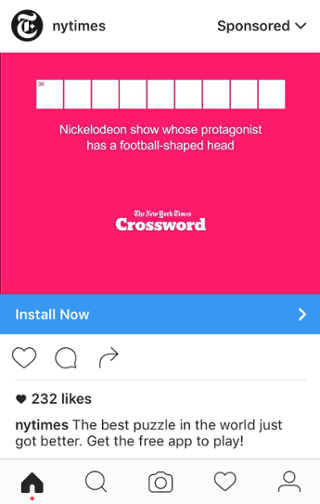
As mentioned, the puzzles were tailor-made for millennials. They offered an application consisting of numerous crossword puzzles, and the results prove that the ad was a triumph.
While scrolling through their Instagram feeds, young people encountered the puzzle and found it appealing. Therefore, they engaged with it and showed interaction.
Conclusion
Naturally, not all businesses have the resources to create high-quality interactive ads from scratch. The process requires skilled marketers to plan and professionals in various fields to execute flawlessly.
If your business lacks the resources to create such ads and benefit from their advantages, we are here to help.
You can outsource the job to Creative Advertising Agency, and we will ensure you will not regret this decision.
Our team of experts has already created several interactive ads for various brands. They have enough experience and technical expertise to guarantee triumph in running interactive advertising campaigns.
If you are interested, feel free to contact us right away.
Nikan



